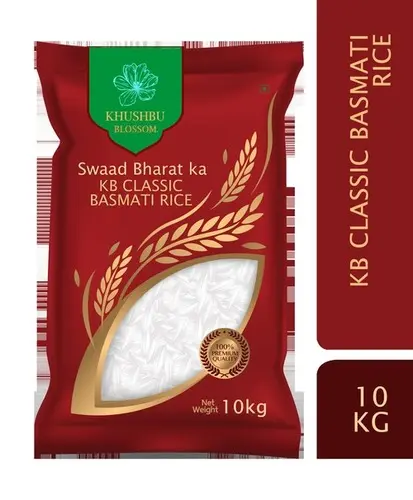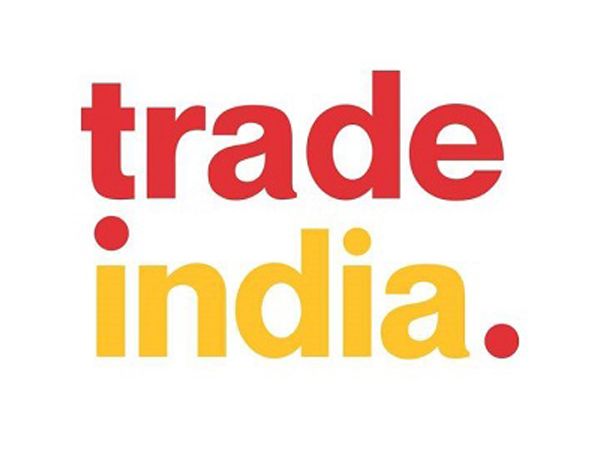Top 10 Export Quality Basmati Rice in India 2025

What is Basmati Rice?
Basmati rice is the long grain aromatic rice which is grown in the specific geographical Himalayan foothills ( Indian sub-continent). This rice is extra-long and slender, becomes soft and fluffy after cooking, tastes delicious, and has a rich aroma and a distinct flavor.
Long basmati rice acquires these characteristics due to the agro-climatic condition of the specific geographical area, plant nutrition, agronomic practices, method of harvesting, processing, and aging attributes.
People all over the world are bowled over by the taste of long basmati rice. In India, biryani or matar pulao seems synonymous with basmati rice or as the Indians say it basmati chawal.
The main varieties of basmati rice or basmati chawal are:
| Product Name | Company Name | Location |
|---|---|---|
| Basmati- 217 | Harsh Thakar | 204, Jawaharnagar, Vasna, Ahmedabad, Gujarat, 380007, India |
| Basmati- 386 | Rajesh Store | New Subhash Pally, Jaigaon, Alipurduar, West Bengal, 736182, India |
| Basmati- 370 | Farmer Exim | No 2-19, Pothireddypally, Sangareddy, Telangana, 502001, India |
| Ranbir basmati | Joginder Singh Labh Singh | Shop No-32, Badi Chopad, Jaipur, Rajasthan, 302003, India |
| Karnal- local/Taraori basmati | D. K. Traders | Adarsh Nagar, Lane No. 12, Jolly Grant, Dehradun, Uttarakhand, 248140, India |
| Pusa basmati- 1121 | Yamuna Seeds | Bajaj Market, Indri, Karnal, Haryana, 132041, India |
| Sugandha basmati rice | Aarush Food Grain Pvt. Ltd | Galib Kheri Road, Village Pakhana, Taraori, Karnal, Haryana, 132116, India |
| Haryana basmati- 1 | Namdhari Rice And General Mills | Shri Jiwan Nagar, Sirsa, Haryana, 125075, India |
| 1401 Steam Basmati | Skrm Foods India Private Limited | Pakhana Road, Village - Nadana, Taraori, Haryana, 132116, India |
| 1509 Golden Basmati | Aspirarch Market Platforms Private Limited | 803, 7th Rajawadi Road, Neelkanth Valley, Ghatkopar East, Mumbai, Maharashtra, 400077, India |
Basmati rice is grown in India in Himachal Pradesh, Jammu & Kashmir, Haryana, Punjab, western Uttar Pradesh, Uttarakhand, and Delhi.
India is the main exporter of basmati rice to the international markets. India exports basmati rice in the world to Iran, Saudi Arabia, Iraq, UAE, Kuwait, Iraq, the UK, Yemen Republic, USA, Canada, and Oman. Among the many other commodities which are being exported to different countries, basmati and non-basmati rice are important commodities.
India is famous worldwide for rice cultivation, being one of the largest producers and consumers of rice. The basmati rice export business is profitable for Indian farmers due to the high demand for this rice and its superior quality. So, if you are a basmati rice supplier, you will be able to gain profit in the basmati rice export business.

White Kb Classic Basmati Rice
Our offerings range from Dubar Basmati Rice, KB Premium Basmati Rice, Traditional Basmati Rice, Bawarchi Rice, Mogra Rice, Golden Sella Rice to more products.
India’s basmati rice exports stood at 11.95 million tons between January and October 2020. The export of non-basmati rice from India has also increased because people are coming to know of the options available. But basmati rice export remains a vital part of India’s economy and provides financial assistance to several large farmers.
India achieved the highest-ever agriculture exports of over 50 billion dollars in FY22. But it was found that in value terms, basmati rice exports declined over the previous year. India’s exports of basmati rice were 3.53 billion dollars in 2021-22, the lowest since 2019-20.
The reason behind the decline was the loss of its traditional market of Iran due to US sanctions. Exports to Iran dipped 26% from a year ago to 834,458 tonnes. The reason behind this was the dwindling of Iran’s rupee reserves.
In the last three years, about 20% of exports of rice have shifted from basmati to non-basmati rice in these regions because of reduced price differentials. Another contributing factor is also the fungicide problems in the European Union. Basmati rice exports to the EU had dipped to 150,000 - 200,000 tonnes from 500,00 tonnes a year.
One reason for the plunging in basmati rice export was that the pesticide residue norms were adopted by Oman, Jordan, Egypt, UAE, and Saudi Arabia in 2021 that were similar to those in the EU.
This has led us to think that if Indian farmers were not given time to adopt changes in pesticide use, basmati rice exports would take a big blow due to the stringent norms.
India’s basmati rice exports to the EU have been declining since it has become strict on its pesticide residue norms in 2017.
On the contrary, the overall rice export has risen. India is the biggest rice exporter in the world. Non-basmati rice is exported to African countries and basmati rice is exported to the Middle East.
As per reports, India's total rice exports increased nearly 46 % in 2021 from a year ago to a record 21.42 million tonnes. This was because Bangladesh, China, and Vietnam increased their purchase quantities.
Basmati rice is considered a signature food commodity in India. Efforts should be directed towards increasing its exports because the market is slowly shifting towards Pakistan.
But according to experts, basmati rice export will soon pick up. Off late, Latin America has opened its door to Indian basmati rice for the first time. Talks between Iran and the US on the nuclear agreement also sheds a ray of light. If both the countries reach a deal and sanctions against Iran are lifted, then the export of Indian basmati rice to Tehran will start again.
Let us have a look at how the basmati rice export business is done in India.
Also Read: How To Start Sella Basmati Rice Export Business in India?
Basmati Rice Exports from India
The biggest markets where basmati rice is exported from India are the Middle East and other Arabian countries because of the large Indian expatriate population. The major importers of Indian basmati rice are as follows:
- The United Kingdom
- The United States of America
- Saudi Arabia
- Singapore
- Malaysia
Steps to be followed to Export Basmati Rice from India
- First of all, the entrepreneurs will have to complete the registration or incorporation of their company. The business owners will have to determine which type of legal entity to form and then apply for the same via the SPICe form with the Ministry of Corporate Affairs.
- Once the entrepreneurs get the incorporation certificate, it is mandatory for the entrepreneurs to apply for and get a company PAN card with the help of the official portal of NDSL.
- The next step is to get the Import Export Code from the Directorate General of Foreign Trade.
- Companies that handle scheduled products such as the ones mentioned below will have to get an APEDA Registration. One can get such registration by following an online procedure. The applicant must submit a web-based form within one month of starting the export business. However, if the exporter fails to do so within the stipulated period due to valid reasons, then such date can again be extended by the authority. Once you have filled and submitted the application along with the requested fee, the authority will issue the Registration-Cum-Membership. The documents needed for obtaining Import Export Code also include Import Export Code.
- Meat products
- Poultry products
- Dairy products
- Cocoa products
- Cereal products
- Floriculture products
- Honey, jaggery, and sugar products
- Fruits and vegetables
- Groundnuts, peanuts, and walnuts
- Biscuits and bakery items
- Confectionery items
- Pickles, papads, and chutneys
- Herbal and medicinal plants
- Alcoholic and non-alcoholic beverages
- Guar gum
- Once the company obtains all the documents, it can look for suppliers, vendors, and buyers. They can either produce their rice or buy them from the farmers.
- Lastly, the company will have to contact a good shipping service for exporting their orders.
Documents needed for exporting Rice from India
- Registration-cum-membership certificate from the DGFT
- ISO certification- It is needed to make sure it is compliant with quality. There are many procedures and steps to get such a certification.
- FSSAI license- It is required for establishing a food business in India. A food license is also a must for exporting edible commodities to overseas countries. The FSSAI license is given by the FSSAI itself and comes with a flexible validity period from 1 to 5 years.
- Self-certified copy of import-export code issued by D.G.F.T.- It can be applied on the website of the Directorate General of Foreign Trade (DGFT). Import Export Code helps to ship the edible item aboard. This certificate is issued by D.G.F.T. to the qualified individual according to top the rules prescribed under EXIM policy and Foreign Trade Policy
- Company registration certificate- One can obtain company registration by applying on the website of the Ministry of Corporate Affairs and submitting the online application in the SPICe + form.
- Company pan card- It is identification proof for a company. It has a ten-digit alphanumeric code that contains all the details about the entity. One can apply for the pan card on the NSDL’s official portal.
- GST registration for tax purposes- As per GST laws, the IEC holder can pay IGST on shipping and then claim a refund for the same. This process has been made simple for the exporters in India. They do not have to file separate refund applications for the export of goods, or services. The shipping bill is the refund claim for the exporters.
- ID and address proof of the applicant
- Photograph of the applicant
- Bank certificate duly signed by the authorities
- Latest 2 months bank statement of the firm
- Canceled cheque
- If the exporter is registered as a manufacturer exporter, they should give a self-attested copy of the registration of the company with the relevant certification agencies for cereals, DIC/SIA, FSSAI/ Udyog Aadhar Memorandum
- Memorandum of Association and Articles of Association
- Customs documents, such as a bill of lading and customs entry document
Documents needed for exporting to European Union and other European countries
- Certification of inspection is needed by EIC/EIA Shipment
Conclusion
The government has made efforts to promote foreign trade through various schemes and they are giving results. The food industry can explore the untapped markets through export and can generate revenue and increase their customer base as well.
Hope this article has given you an idea about the basmati rice business that is carried out in India.
FAQ's: Basmati Rice
Q. Is basmati rice is good for health?
Ans. Below are some major health benefits of basmati rice:
- Better Heart Health
- Reduced Risk of Cancer
- Better Brain Health
- Basmati rice also contain a significant amount of fiber.
Q. How many types of basmati rice are there?
Ans. There are 34 varieties of Basmati rice have been notified under the seeds Act, 1966.
Q. Which country produces more basmati rice?
Ans. India accounts for over 70% of the world's basmati rice production.
Related Blog Topics:
